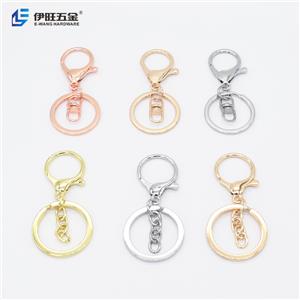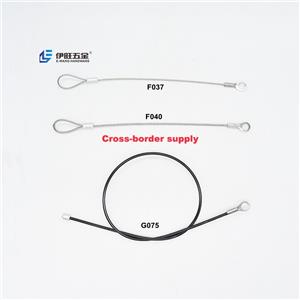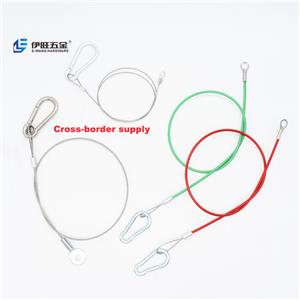Why does the stainless steel material of the book ring also rust?
Title: The Paradox of Stainless Steel: Why Does the Material of Book Rings Rust?
Introduction
Stainless steel is celebrated as a material known for its corrosion resistance and durability. It's commonly used in a wide range of applications, from cutlery to architecture. One might assume that stainless steel book rings, designed to keep your documents organized and pristine, would be immune to rust. However, there's an interesting paradox at play: even stainless steel book rings can rust. In this exploration, we will delve into the nature of stainless steel, the factors that contribute to its rusting, and the practical implications of this paradox.
The Marvel of Stainless Steel
Stainless steel's corrosion resistance is one of its most cherished qualities. This alloy, primarily composed of iron, chromium, and nickel, forms a passive layer of chromium oxide on its surface. This passive layer serves as a protective shield against environmental factors, preventing the metal beneath from succumbing to rust. The chromium oxide layer is self-repairing and self-renewing, further enhancing stainless steel's resilience.
So, Why Do Stainless Steel Book Rings Rust?
While stainless steel book rings are crafted to be highly resistant to corrosion, there are several factors that can compromise their ability to resist rust. Let's delve into some of these key reasons:
1. Quality of Stainless Steel: Not all stainless steel is created equal. The quality of the alloy used in manufacturing book rings can vary. Some low-quality stainless steel may have insufficient chromium or nickel content, reducing the protective effect of the passive layer and making it more susceptible to corrosion.
2. Manufacturing Processes: The way book rings are manufactured can influence their resistance to rust. If the manufacturing process introduces impurities or weakens the protective passive layer, it can compromise the stainless steel's corrosion resistance.
3. Environmental Factors: While stainless steel is highly resistant, it is not entirely immune to the effects of the environment. Excessive exposure to moisture, salt, or chemicals can gradually erode the passive layer and lead to rust formation. Book rings that are regularly subjected to these harsh conditions are more likely to rust.
4. Surface Contaminants: Even the highest quality stainless steel can rust if it's exposed to surface contaminants such as iron particles or chlorides. These contaminants can disrupt the passive layer and create sites for rust initiation.
5. Mechanical Damage: Scratches, dents, or other forms of mechanical damage can compromise the integrity of the passive layer, exposing the underlying metal to the elements. Over time, this can lead to rusting.
Practical Implications
The rusting of stainless steel book rings has practical implications, especially in organizational and archival settings. Here are a few notable consequences:
1. Document Preservation: Book rings are often used to hold important documents together, such as legal paperwork, medical records, or research materials. Rusting book rings can stain or damage these documents, compromising their integrity and longevity.
2. Aesthetics: In addition to their functional role, book rings are also chosen for their appearance. When they rust, they lose their aesthetic appeal, which can be disappointing for those who value both form and function.
3. Durability: The lifespan of book rings is significantly reduced when they rust. This means frequent replacements, which can be costly and time-consuming.
4. Maintenance: Users may need to invest more time and effort into maintaining book rings, cleaning and protecting them from rust. This adds an extra layer of responsibility to the already busy lives of individuals and organizations.
Conclusion
The paradox of stainless steel book rings rusting reminds us that no material is entirely impervious to corrosion, especially in the presence of certain unfavorable conditions. While stainless steel is renowned for its resistance to rust, there are factors that can compromise its protective passive layer, leading to rust formation. To mitigate this paradox, it is crucial to ensure the use of high-quality stainless steel, implement proper manufacturing processes, and be mindful of the environment and contaminants to which book rings are exposed.
Additionally, regular maintenance and cleaning can help extend the life of stainless steel book rings and preserve the integrity of the documents they hold. As with any material, understanding its limitations and taking appropriate precautions is key to ensuring its long-term functionality and aesthetic appeal. The paradox of stainless steel book rings rusting serves as a valuable reminder of the delicate balance between nature's forces and human-made materials, highlighting the need for ongoing research and innovation in material science and engineering.




